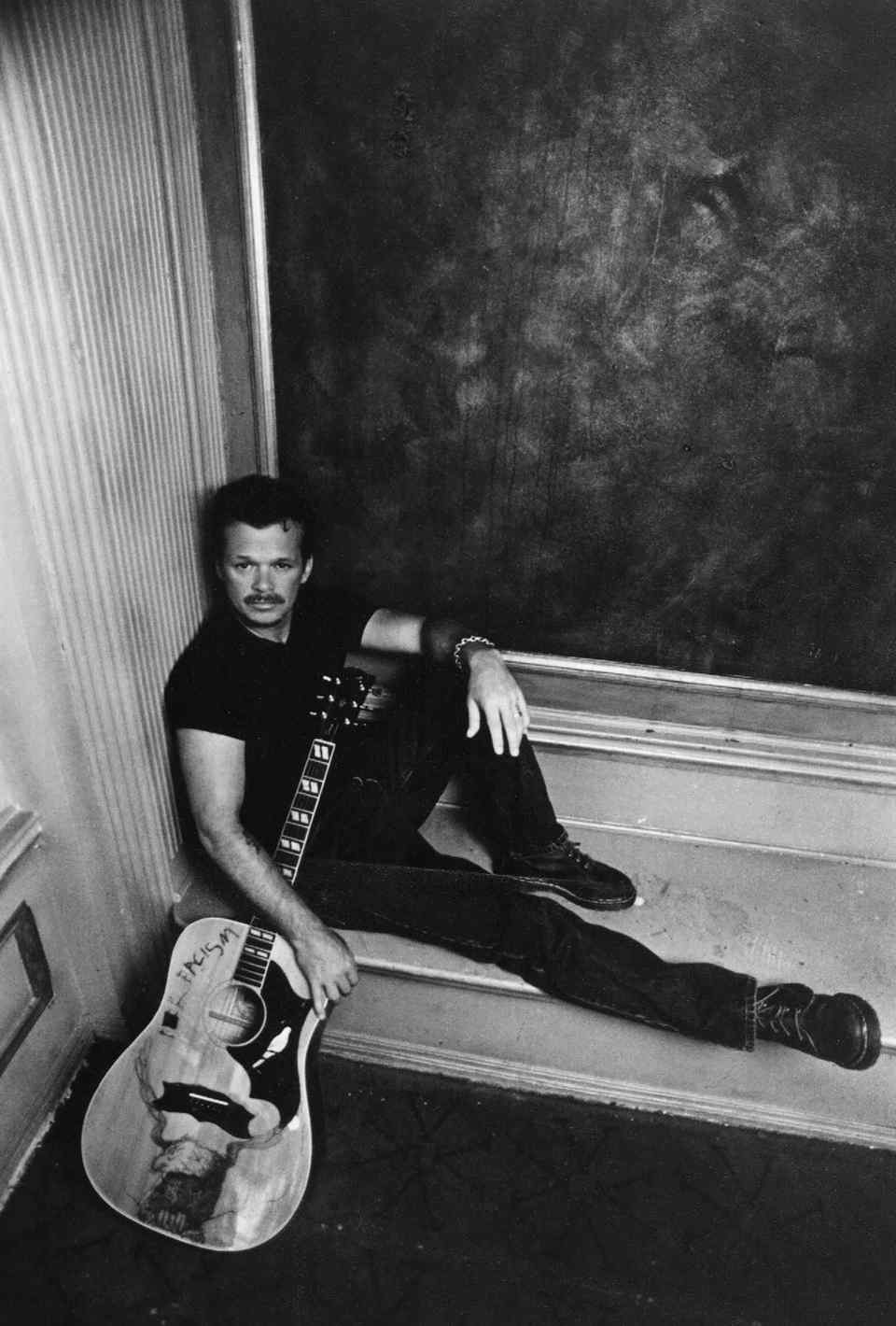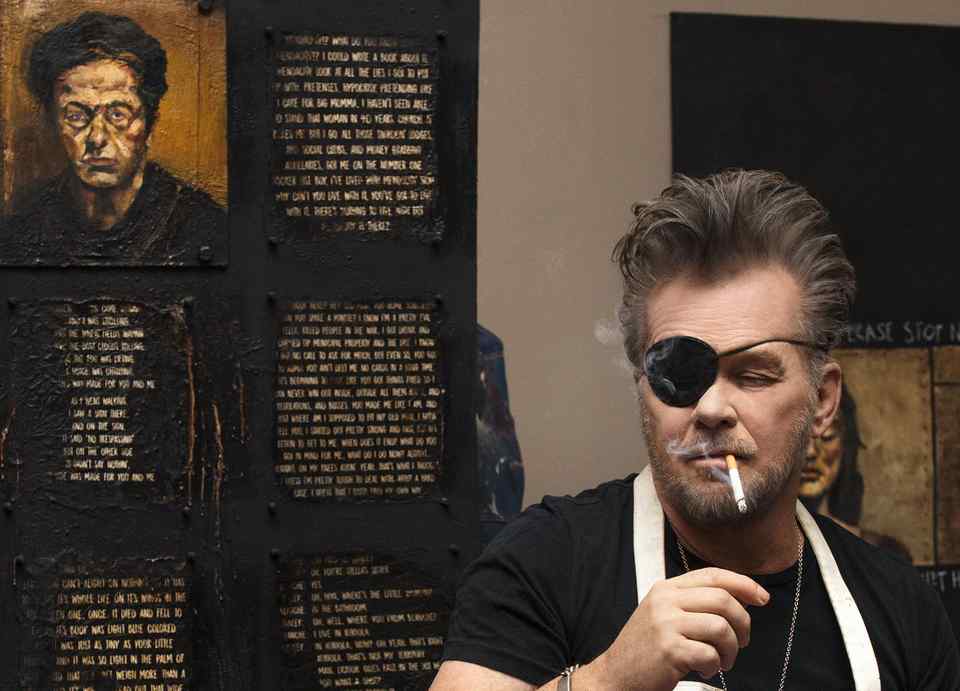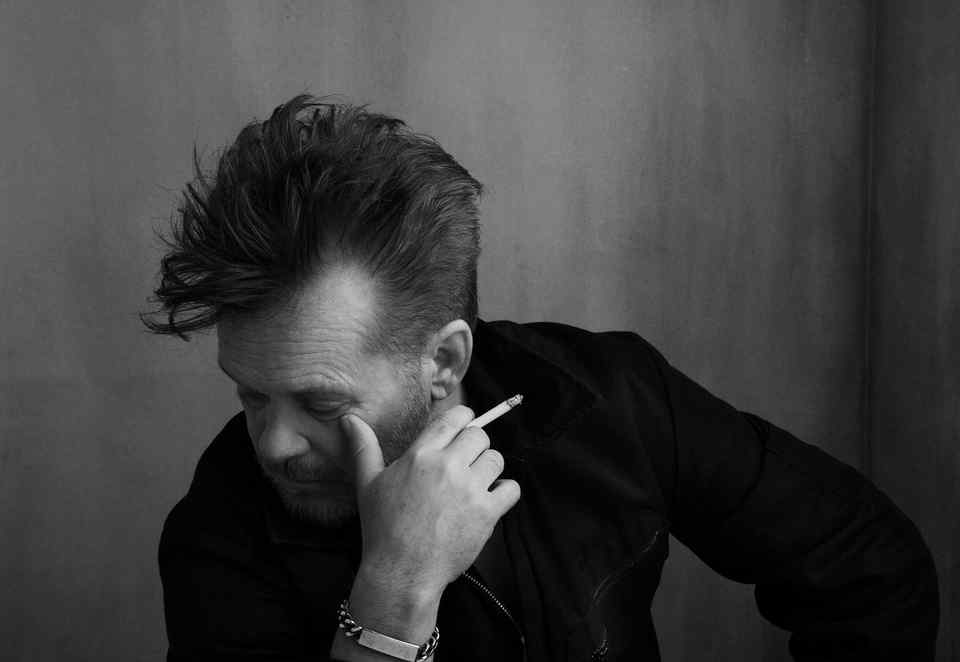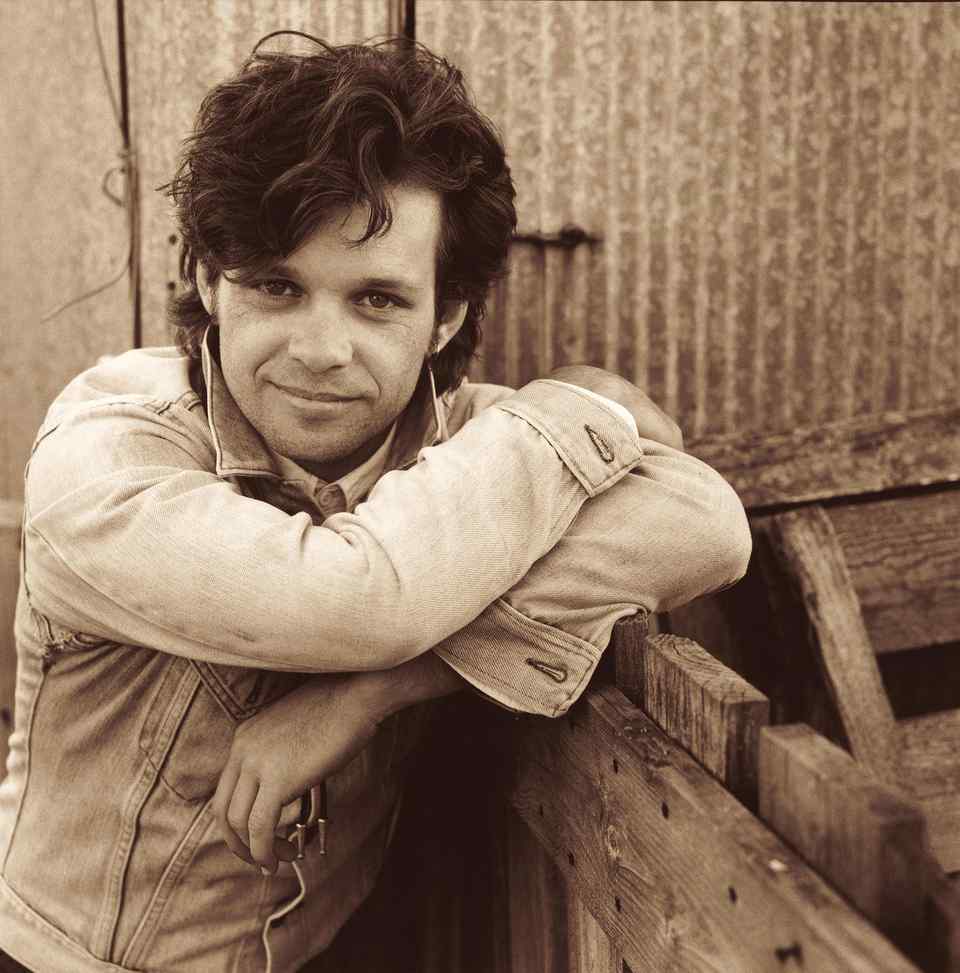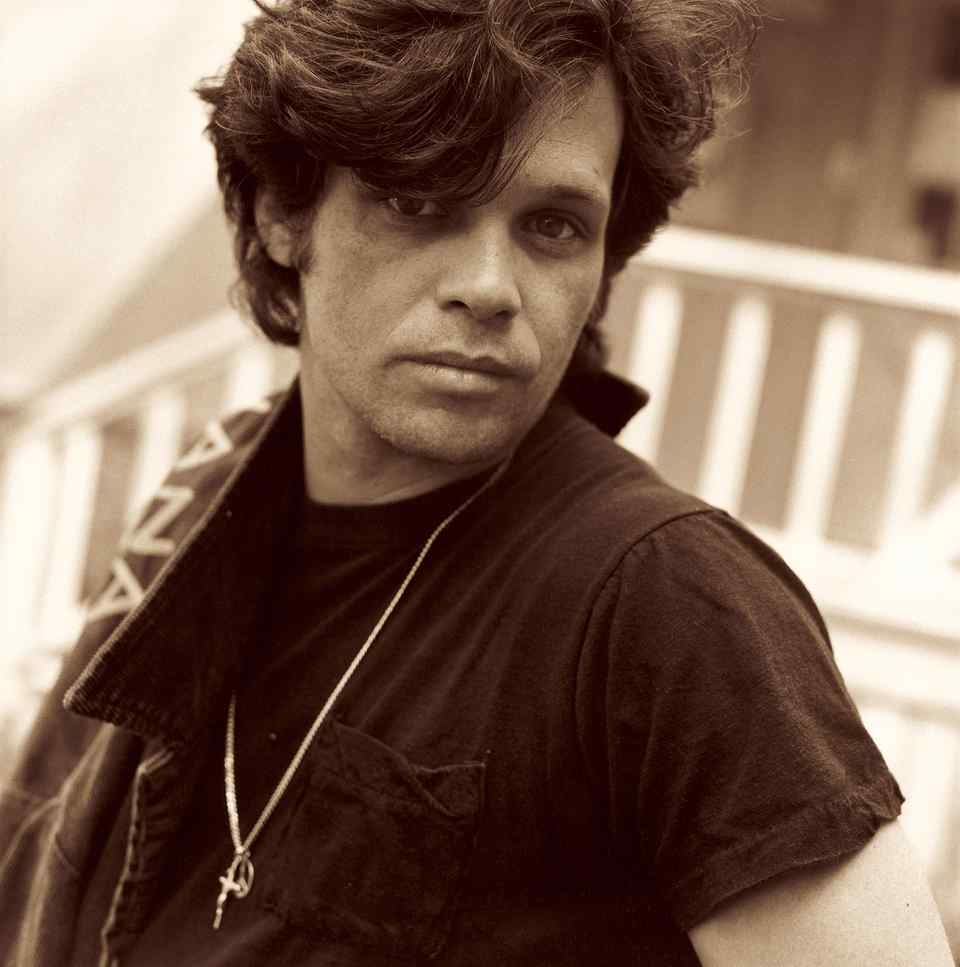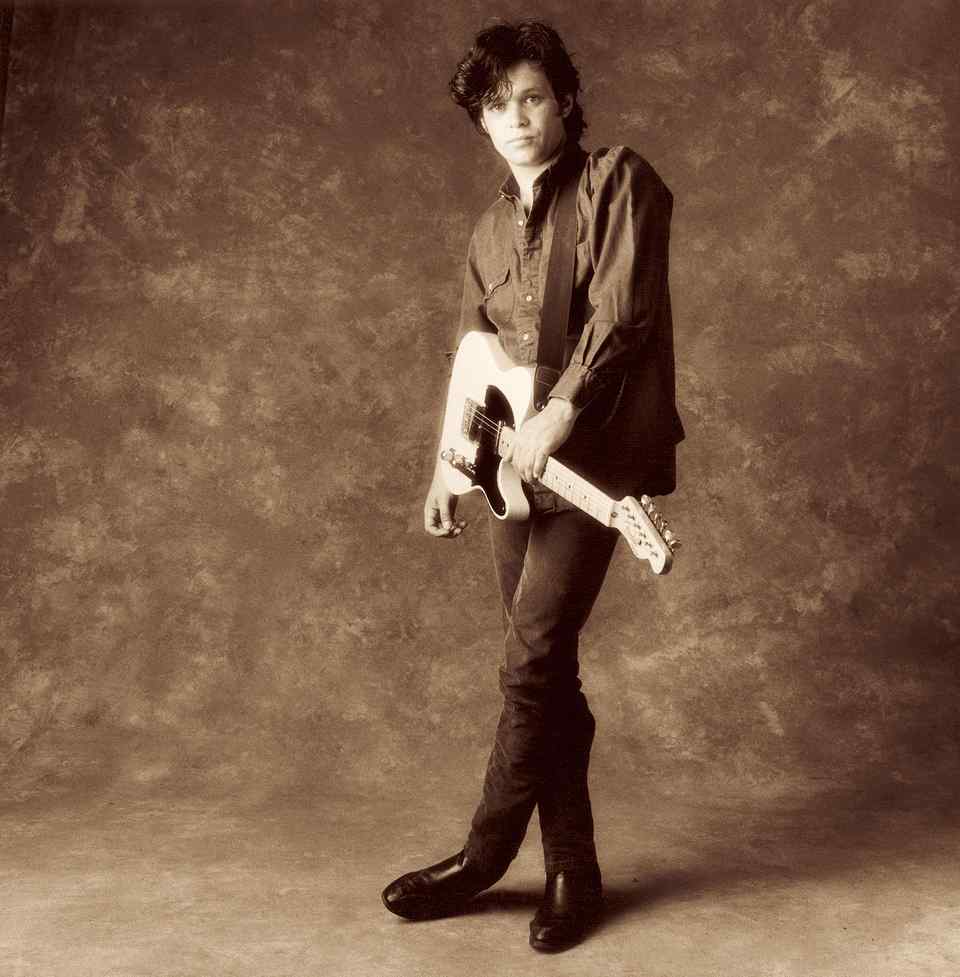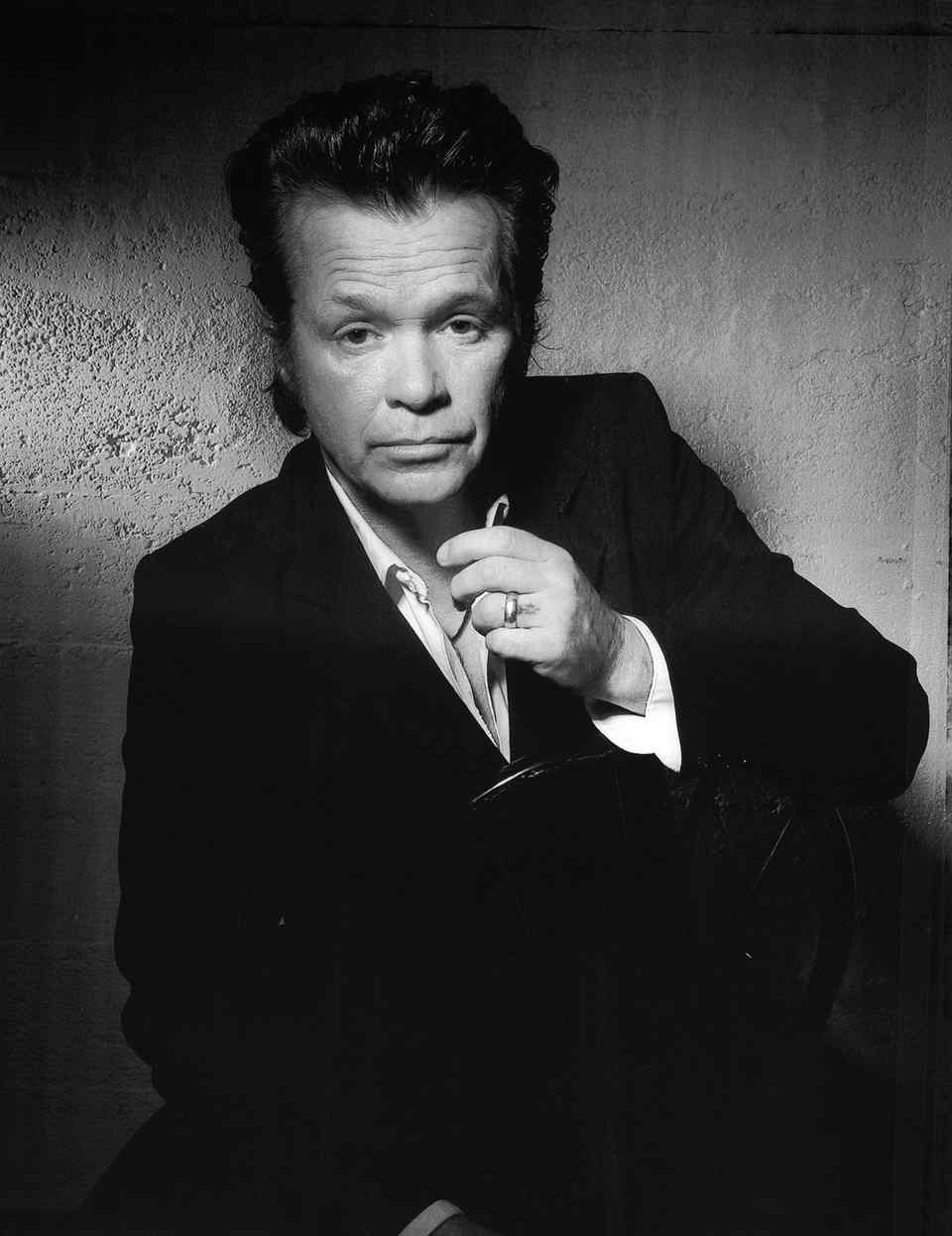The Wall Street Journal: From John Lennon To John Mellencamp: Rock-Star Painters In Spotlight
What does rock-star art look like?
David Bowie painted people with smudged-out faces. The subjects in Patti Smith ’s drawings include the 19th-century French poet Arthur Rimbaud. Marilyn Manson ’s watercolors offer a family of demonic toddlers and ghoulish adults. Rolling Stones guitarist Ronnie Wood ’s muses include—who else— Mick Jagger.
The art establishment is tightening its embrace of musicians as prices for their paintings, prints and drawings steadily rise. Crowds are flocking to exhibits by artists plucked straight off the playlist.
Last year, Sotheby’s set an auction record for a John Lennon drawing with the $109,375 sale of “Untitled Illustration of a Four-Eyed Guitar Player,” a squiggly ink-on-paper by the late Beatle that more than quadrupled its high estimate. In the sale of Mr. Lennon’s drawings and manuscripts, artwork snagged five of the top 10 prices. “It was a phenomenal success,” said Sotheby’s specialist Philip Errington. Work by Joni Mitchell, Bob Dylan, George Harrison and Jim Morrison also set auction records in 2014.
The interest in rock-star art comes as museums examine the broader cultural influence of musicians. This March, the Museum of Modern Art in New York will offer an original exhibit on the career of Icelandic singer-songwriter Björk. A major show examining Mr. Bowie’s music and creative process, organized by London’s Victoria & Albert Museum, is now on a world tour (the show just left Chicago’s Museum of Contemporary Art, where it broke attendance records).
This month, the Morris Museum of Art in Augusta, Ga., opened an exhibit of 50 paintings by John Mellencamp. The 63-year-old singer-songwriter, known for 1980s hits like “Hurts So Good” and “Jack & Diane,” creates large-scale oil portraits and mixed-media pieces featuring gritty characters in disquieting settings. He occasionally adds in images of guitars, lyrics and other music references.
“I don’t know if we’re really painters, but we paint,” Mr. Mellencamp said of prominent musicians who are stepping up to the easel. The artist, who works in a corrugated-tin studio just down the road from his home in Indiana, said creative people can find expression in more than one medium: “If you really are open to painting every day, surely you’re going to step onto something great once in a while. Surely a blind pig can find an acorn every now and then.”
For museums, such shows can be a boon. The Butler Institute of American Art in Youngstown, Ohio, hosted a Mellencamp exhibit just over a year ago. The rocker attended the opening, and crowds followed for the length of the two-month run. “As you can imagine, the name alone attracted an audience,” said Butler executive director Louis Zona. “Once people saw the work, they were very impressed with what he does and the social conscience coming through. There’s a lot of emotion tied to these works.” The Butler, which showed Tony Bennett’s art in the past, will feature portraits by Bob Dylan this spring.
“It might seem like a vanity show at one level, but at another it’s building their business” by pulling in new audiences, Gerry Snyder, dean of the school of art at Pratt Institute in Brooklyn, N.Y., said of the museum approach to celebrity art. Museums that are singling out musicians for shows would never even consider similar exhibits for fine artists of comparable skill, he said. Mr. Snyder praised the artwork of only one celebrity: actor Martin Mull, a graduate of the Rhode Island School of Design whose painting he said reflected a “professional skill set.”
The line between art and memorabilia can blur in this category, and the artworks attached to famous people don’t always sell. If they do, they may go for what the art world would consider pocket change. A limited-edition lithograph by the late Donna Summer entitled “Hard for the Money”—evoking her hit song from 1983—fell short of its $2,000 low estimate in a sale by the online auction house RoGallery.com last year. The image of a broad-shouldered blonde singing in a red dress went for $1,600.
Critics can’t always make up their minds about this kind of art, which they generally call earnest but dismiss as little more than a good effort. Bob Dylan’s artwork has been particularly polarizing. When his pastel portraits went on view at the National Portrait Gallery in London in 2013, the Guardian called the musician “much more of an artist than plenty of people who do it full-time will ever be.” Two years earlier, the New York Times dismissed Mr. Dylan’s show at the Gagosian Gallery in New York as “dead on the wall.”
That 2011 Gagosian exhibit stirred debate from the start. Critics accused the singer-songwriter of copying photographs in his pictures—even though the paintings initially were presented as a diary of Mr. Dylan’s firsthand experiences in Asia. The gallery later said the works were based multiple sources.
John Elderfield, former chief curator of painting and sculpture at New York’s Museum of Modern Art and now a consultant to the Gagosian Gallery, is one of Mr. Dylan’s champions. In an email, he wrote that he was not surprised Mr. Dylan’s paintings have drawn some detractors: “There was the same reaction when Picasso wrote poems; instead of acknowledging that they were amazing creations, critics said he should stick to visual art. I happen to think that Dylan’s are products of an extraordinary, inventive imagination, the same mind and eye that made the songs, but turned in a different direction.”
Mr. Mellencamp is represented by the long-standing ACA Galleries in New York, which prices his paintings from $25,000 to more than $150,000. He has cited as inspirations German expressionists such as Otto Dix and Max Beckmann ; others see the influence of certain Chicago surrealists or American contemporary artists like Jean-Michel Basquiat and George Condo. When finished, his works are deliberately battered; he stows his canvases outside, where they may crack and grow mold.
It was Mr. Dylan who encouraged him to start selling his art, Mr. Mellencamp said. Mr. Dylan visited the heartland rocker’s home and saw stacks of canvases lying around: “He said, ‘What are you going to do with all this?’ I said, ‘Who’s going to buy it?’” Mr. Mellencamp recalled. “He said, ‘They buy my stuff.’”
Mr. Mellencamp said there are real painters, and then there are just rock stars who paint. “I’ve seen some paintings by musicians where you’re just kind of like, ‘Are you kidding me?’” he said of the lamer attempts. But he added that musicians sometimes create visual art that outdoes even their best music: “I’ve seen some paintings where I went, ‘Wow. The guy should’ve never written a song in his life.’”
